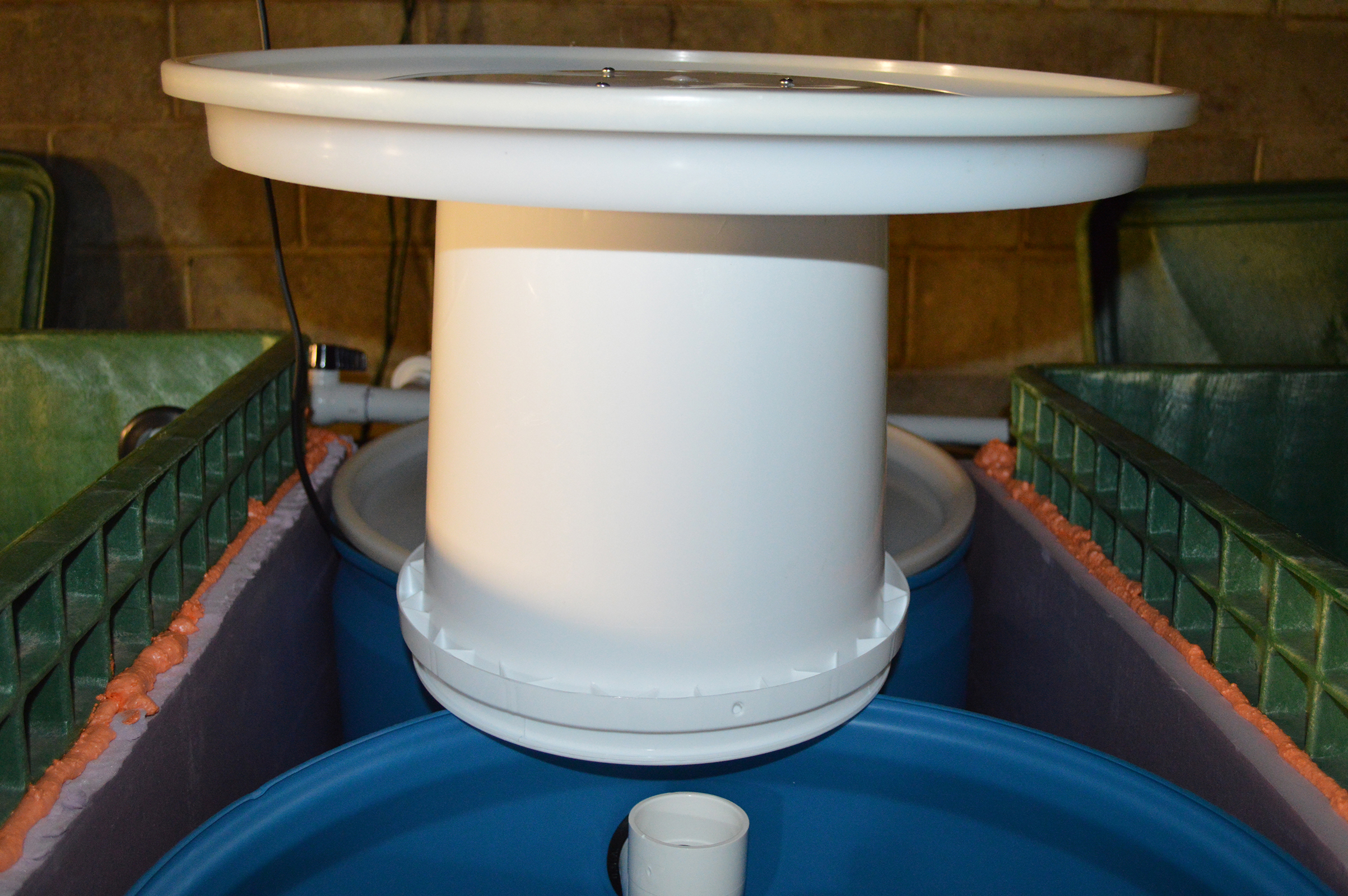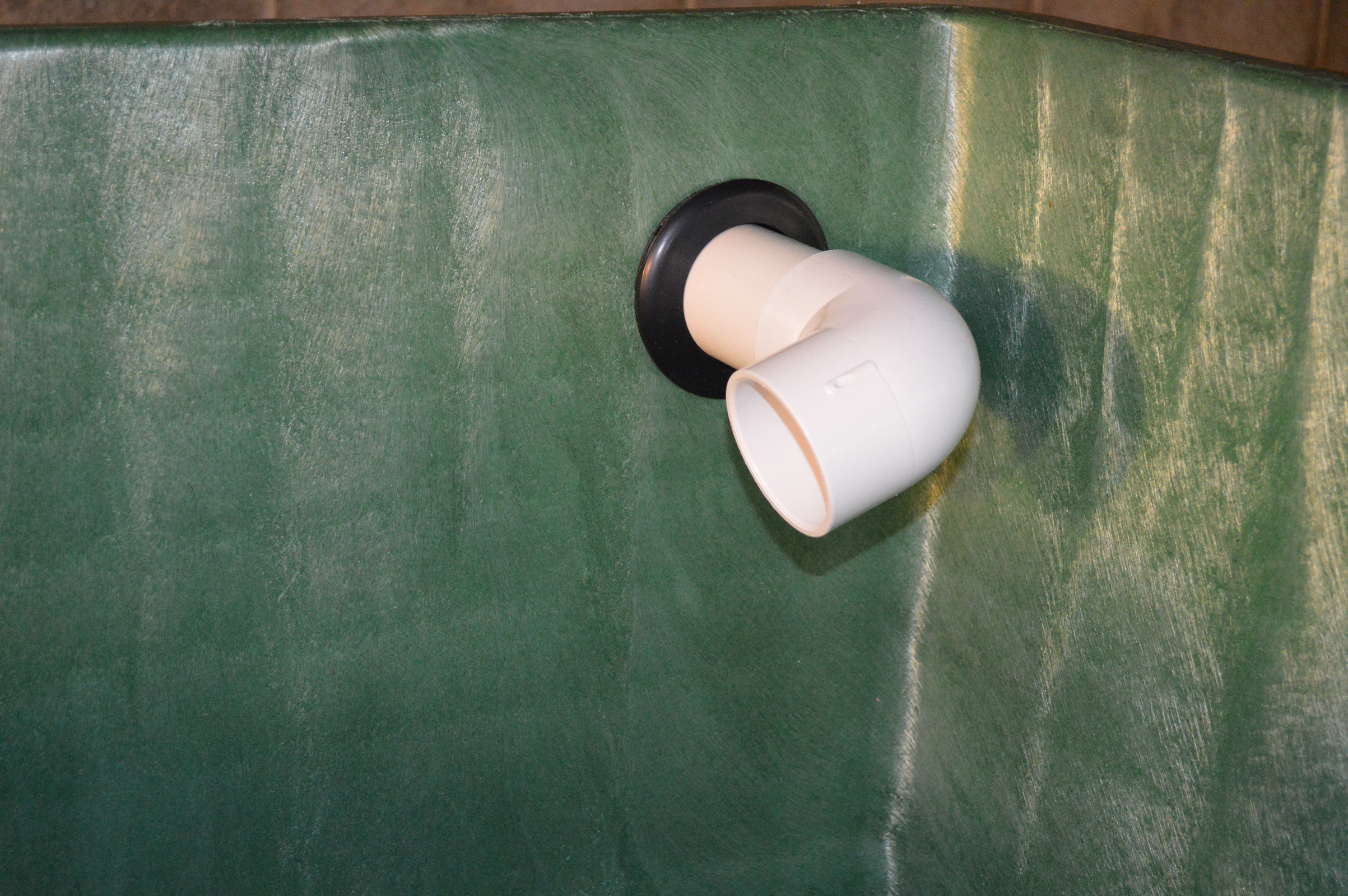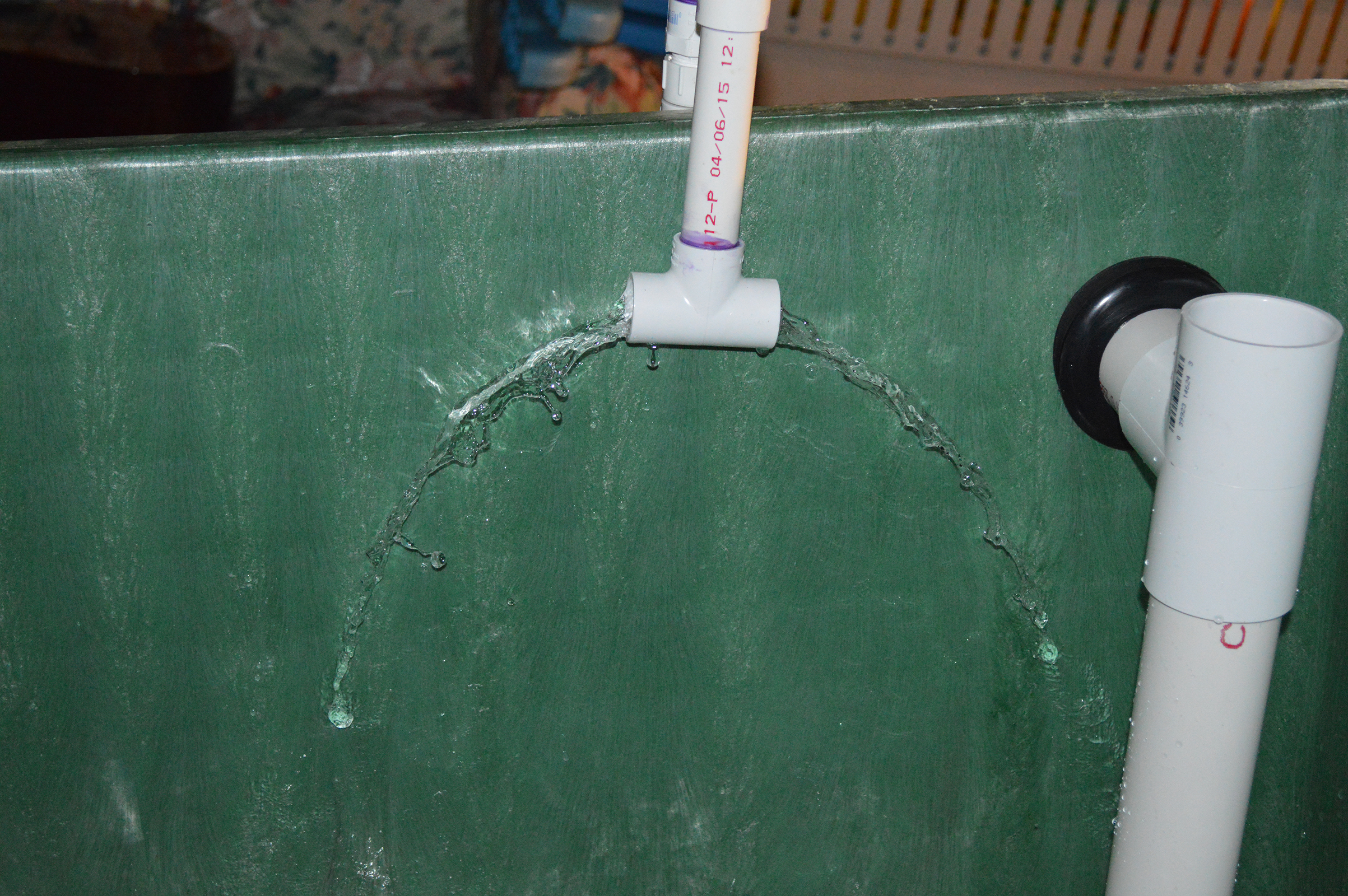As I ramped up my breeding (african cichlids) I realized I wanted a system with large water volume to grow the fish out faster. I read a lot about aquaculture and used some of those principles in the design. After a couple of months of work it's finally done.
I've been documenting the process on YouTube. The playlist is here:
https://www.youtube.com/playlist?list=PLb13VZR4wG4Tr9siBtohYr6_lhJT6Yi4x

I had a roughly 10'x10' area in my basement crawlspace to use.

I considered many different options for the main fish tanks. I wanted as much water volume as possible but I was somewhat limited by the size of the entrance to my crawlspace. I also wanted to minimize the chance of leaks. I settled on these two 180 gallon bulk bins (with lids) that I found on craigslist.

Inside view of one of the bins. They're one solid piece and are made of FDA approved materials. They fit through the entrance but just barely.

I leveled the area and put down plywood and then concrete blocks to raise the fish tanks up a bit. This makes them the highest point in the system. I also added some smaller blocks to go underneath the filter barrels.

I decided to insulate the fish tanks. I had some 2 inch rigid foam left over from another project so I used that on the bottom. I used expanding foam to attach the pieces to the tank and fill in the gaps.

The tanks in their final position with the insulation on the bottom.

I also bought a couple of 4x8 sheets of 1 inch rigid foam and used those on the sides.

I bought two food grade barrels from a local specialty shop to use for the filters. These are 45 gallons instead of 55 because the 45 gallon version had better lids.

I went with a 100 gallon Rubbermaid stock tank for the sump. Purchased from Tractor Supply. This is the lowest part of the system.

I decided on 2 inch overflows with bulkheads. I drilled a hole in each tank with a 2 inch hole saw and then a 3 inch hole in the insulation to provide space for the nut.

One of the bulkheads in place.

View from inside the tank.

These are the Solids Lifting Overflows (SLOs). They draw water (and waste) from the bottom of the tank. The tee fitting at the top prevents a siphon from forming and draining the entire tank. It also acts as a backup if the SLO gets clogged.

There are many different ways to design the bottom of a SLO. I went with a cap with a bunch of small holes to prevent the fish from being sucked into the overflow. I enlarged the holes a bit once the system was up and running.

The overflows enter the first barrel after a gentle curve. This can be accomplished one of two ways: with two 45 degree fittings (left) or a long sweeping 90 (right). This prevents the waste from settling in the turns. All of the barrel connections are made with uniseals which are better suited to curved surfaces than bulkheads.

The first filter is called a Radial Flow Filter. You may have heard of a swirl filter and this is a similar concept. The water comes in (again with gentle curves) and up and over two standpipes.

A bucket is attached to the lid (with stainless steel screws).

This bucket surrounds the standpipes which forces the water to go downward and then change direction to go back upward before it reaches the overflow into the next barrel. This causes the solids to sink to the bottom of the barrel.

A view of the RFF with the lid in place.
Pictures continued in the comments...
I've been documenting the process on YouTube. The playlist is here:
https://www.youtube.com/playlist?list=PLb13VZR4wG4Tr9siBtohYr6_lhJT6Yi4x

I had a roughly 10'x10' area in my basement crawlspace to use.

I considered many different options for the main fish tanks. I wanted as much water volume as possible but I was somewhat limited by the size of the entrance to my crawlspace. I also wanted to minimize the chance of leaks. I settled on these two 180 gallon bulk bins (with lids) that I found on craigslist.

Inside view of one of the bins. They're one solid piece and are made of FDA approved materials. They fit through the entrance but just barely.

I leveled the area and put down plywood and then concrete blocks to raise the fish tanks up a bit. This makes them the highest point in the system. I also added some smaller blocks to go underneath the filter barrels.

I decided to insulate the fish tanks. I had some 2 inch rigid foam left over from another project so I used that on the bottom. I used expanding foam to attach the pieces to the tank and fill in the gaps.

The tanks in their final position with the insulation on the bottom.

I also bought a couple of 4x8 sheets of 1 inch rigid foam and used those on the sides.

I bought two food grade barrels from a local specialty shop to use for the filters. These are 45 gallons instead of 55 because the 45 gallon version had better lids.

I went with a 100 gallon Rubbermaid stock tank for the sump. Purchased from Tractor Supply. This is the lowest part of the system.

I decided on 2 inch overflows with bulkheads. I drilled a hole in each tank with a 2 inch hole saw and then a 3 inch hole in the insulation to provide space for the nut.

One of the bulkheads in place.

View from inside the tank.

These are the Solids Lifting Overflows (SLOs). They draw water (and waste) from the bottom of the tank. The tee fitting at the top prevents a siphon from forming and draining the entire tank. It also acts as a backup if the SLO gets clogged.

There are many different ways to design the bottom of a SLO. I went with a cap with a bunch of small holes to prevent the fish from being sucked into the overflow. I enlarged the holes a bit once the system was up and running.

The overflows enter the first barrel after a gentle curve. This can be accomplished one of two ways: with two 45 degree fittings (left) or a long sweeping 90 (right). This prevents the waste from settling in the turns. All of the barrel connections are made with uniseals which are better suited to curved surfaces than bulkheads.

The first filter is called a Radial Flow Filter. You may have heard of a swirl filter and this is a similar concept. The water comes in (again with gentle curves) and up and over two standpipes.

A bucket is attached to the lid (with stainless steel screws).

This bucket surrounds the standpipes which forces the water to go downward and then change direction to go back upward before it reaches the overflow into the next barrel. This causes the solids to sink to the bottom of the barrel.

A view of the RFF with the lid in place.
Pictures continued in the comments...




























